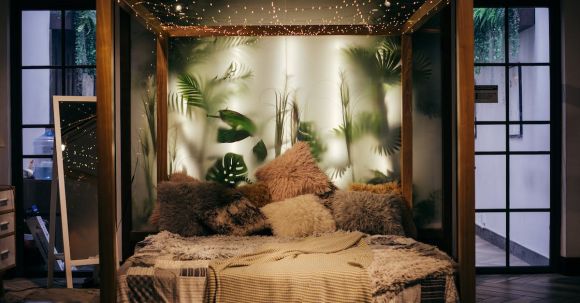A well-lit home not only looks more inviting and attractive but also has numerous benefits for our physical and mental well-being. Natural light is not only healthier but also more energy-efficient than artificial lighting. By utilizing and maximizing the natural light in your home, you can create a warm and welcoming environment while reducing your energy consumption. In this article, we will explore some simple yet effective strategies to bring more natural light into your living spaces.
1. Keep Windows Clean and Unobstructed
The first step to maximizing natural light in your home is to ensure that your windows are clean and free from any obstructions. Over time, dirt, dust, and grime can accumulate on the glass, reducing the amount of light that enters your home. Regularly clean your windows with a glass cleaner to maintain their clarity. Additionally, avoid placing furniture or objects in front of windows that may block the natural light from coming in.
2. Use Lighter Colors for Walls and Furniture
Light-colored walls and furniture can help reflect and amplify natural light, making your rooms appear brighter and more spacious. Opt for neutral shades like white, cream, or pastel colors for your walls to maximize the light bouncing off them. Similarly, choose lighter-colored furniture upholstery and accessories to enhance the overall brightness of your space.
3. Install Mirrors Strategically
Mirrors are an excellent tool for increasing the amount of natural light in your home. By placing mirrors strategically across from windows or in dark corners, you can effectively bounce and distribute light throughout the room. Consider using large mirrors or mirrored furniture to create an illusion of more space while reflecting and amplifying the natural light.
4. Utilize Sheer Window Treatments
While privacy is important, heavy and opaque window treatments can obstruct natural light. Instead, opt for sheer curtains or blinds that allow light to filter through while still maintaining your privacy. Sheer window treatments not only maximize natural light but also create a soft and airy ambiance in your living spaces.
5. Trim Outdoor Vegetation
Overgrown trees and bushes around your windows can block natural light from entering your home. Regularly trim and maintain outdoor vegetation to ensure that your windows are not obstructed. Consider planting low-maintenance, light-friendly plants near your windows to enhance the flow of natural light indoors.
6. Incorporate Skylights or Sun Tunnels
If you have a dark or windowless area in your home that lacks natural light, consider installing skylights or sun tunnels. These architectural features allow natural light to enter from above, illuminating spaces that would otherwise be deprived of sunlight. Skylights and sun tunnels can be particularly beneficial in areas like bathrooms, hallways, or basements.
7. Optimize Interior Layout
Finally, consider the layout of your furniture and the arrangement of your rooms to maximize natural light. Place furniture away from windows to allow light to flow freely into your space. Avoid blocking windows with bulky or tall furniture pieces that may obstruct the natural light. By optimizing your interior layout, you can ensure that your home is flooded with as much natural light as possible.
In conclusion, maximizing natural light in your home is not only aesthetically pleasing but also has numerous benefits for your well-being and energy consumption. By keeping your windows clean, using lighter colors, strategically placing mirrors, utilizing sheer window treatments, trimming outdoor vegetation, incorporating skylights or sun tunnels, and optimizing your interior layout, you can create a bright and inviting living environment that harnesses the power of natural light. So, let the sunshine in and enjoy the many advantages of a well-lit home.





